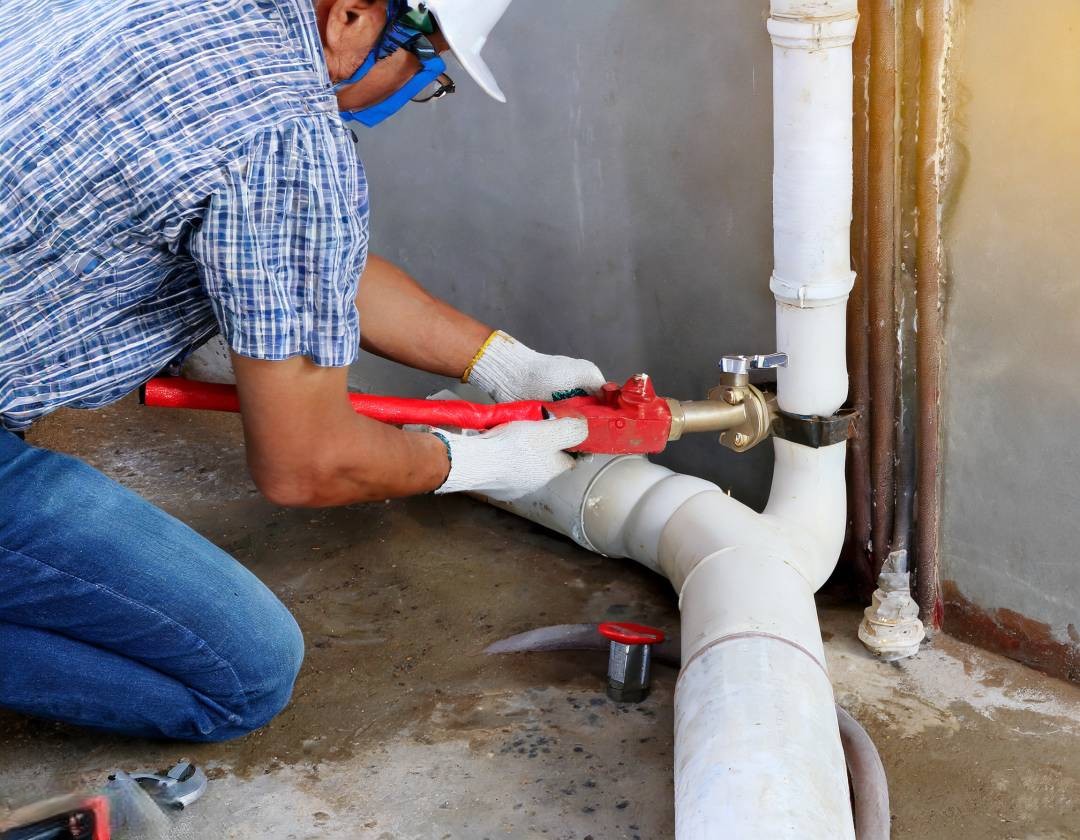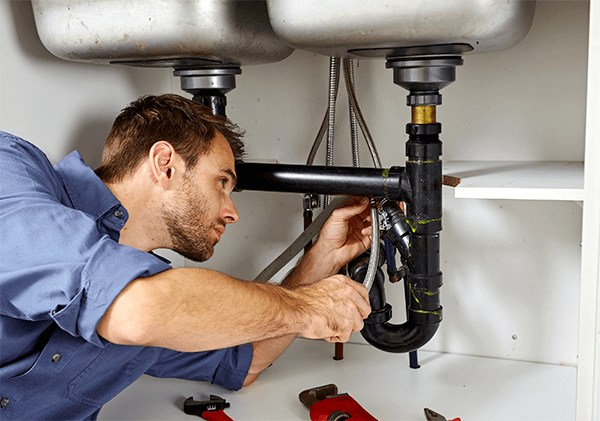Key Tips for Dealing with Plumbing in Older Homes
Key Tips for Dealing with Plumbing in Older Homes
Blog Article
How do you really feel about Main Plumbing Issues Found in Old Houses?

Older homes typically come with appeal, personality, and background, however they can likewise bring a host of pipes issues. Whether you're taking care of maturing pipes, low water stress, or leaks, recognizing how to address these typical issues is essential to keeping a risk-free and functional home. In this guide, we'll discover the normal pipes difficulties encountered by older homes and supply practical options to maintain your pipes in leading shape.
Recognizing Common Pipes Problems
Aging Pipelines
One of the most common concerns in older homes is maturing pipelines. Depending upon the period in which your home was constructed, the pipes might be made from materials that have worn away with time, such as galvanized steel, cast iron, and even lead. These materials can wear away, end up being weak, or develop leakages, bring about water damage and possible health hazards.
Low Tide Stress
If you're experiencing low water stress, maybe as a result of mineral deposits, deterioration inside the pipelines, or old components that are no more functioning successfully. This can be a significant hassle, especially in locations like showers and sinks.
Leaking Pipes
Leakages are another regular issue in older homes, typically triggered by rusty or damaged pipes. Also tiny leakages can result in substantial water damages, mold development, and raised water costs if not attended to quickly.
Outdated Fixtures
Obsolete plumbing fixtures such as taps, commodes, and showerheads not just look old but might additionally be much less reliable, prone to leaks, or incompatible with modern-day plumbing criteria.
Pipeline Deterioration
Deterioration is a common issue in older pipelines, specifically those made from galvanized steel or cast iron. Corroded pipes can limit water flow, cause discoloration, and eventually bring about leakages or pipe bursts.
Evaluating the Problem of Your Plumbing
Examining Noticeable Pipelines
Start by checking any kind of visible pipelines in your home, such as those in cellars, crawl spaces, or under sinks. Search for signs of rust, leakages, or corrosion, which can show underlying problems.
Looking for Leakages
Look for leakages by evaluating areas around faucets, commodes, and under sinks. You can additionally monitor your water meter prior to and after a duration of no water utilize to detect concealed leakages.
Water Top Quality Screening
Older pipelines can affect the top quality of your water. Conduct a water top quality test to look for contaminants such as lead, rust, or various other impurities that may be presented by aging pipelines.
Solutions for Typical Plumbing Concerns
Replacing Aging Pipes
If your home has old, weakening pipes, consider changing them with contemporary materials like copper or PEX. This can be a substantial investment, but it will certainly avoid future issues and enhance the safety and reliability of your pipes system.
Taking Care Of Low Water Stress
To repair low tide pressure, start by cleansing or replacing old components and eliminating mineral buildup in the pipelines. If the problem continues, it might be necessary to change areas of rusty pipes.
Fixing and Replacing Dripping Pipelines
For little leaks, you can use pipeline clamps or epoxy putty as a temporary fix. However, it's best to change dripping pipes completely to prevent more damages.
Upgrading Fixtures
Updating old components to modern, water-efficient models can enhance your home's pipes performance and minimize water consumption. Search for components with the WaterSense label for the very best effectiveness.
Taking Care Of Pipe Rust
If your pipes are worn away, replacing them with corrosion-resistant materials like copper, PVC, or PEX is the best option. Normal evaluations and water quality upkeep can help protect against further corrosion.
When to Call an Expert
While some pipes issues can be taken care of with DIY options, there are times when it's best to call in a professional. If you're taking care of significant leakages, extensive rust, or are not sure concerning the problem of your pipelines, an accredited plumbing technician can offer skilled analysis and fixing.
Preventive Maintenance Tips
Regular Inspections
On a regular basis evaluate your pipes system for indicators of damage. Capturing problems early can stop expensive repair services down the line.
Water Stress Law
Guarantee your water stress is within the suggested range to avoid stressing your pipelines and components. A plumber can install a pressure regulator if needed.
Water High Quality Maintenance
Install water filters or softeners if your water quality is poor. This can protect your pipelines and components from damage caused by hard water or contaminants.
Proactive Pipeline Replacement
If your home has very old pipes, think about positive replacement before major issues develop. This can save you from emergency repair work and water damage.
Conclusion
Dealing with pipes problems in older homes needs a combination of caution, precautionary maintenance, and timely upgrades. By comprehending the usual obstacles and knowing when to seek expert assistance, you can ensure your plumbing system stays functional and reputable for years ahead.
Common Plumbing Issues in Older Homes
Pipe corrosion
Pipe corrosion is a common plumbing issue in older homes. Several factors can cause pipes to corrode:
Water: Ironically, water is the number one cause of pipe corrosion. When water seeps into cracks in pipes, it can cause the metal to rust and break down, leading to leaks or even burst pipes.
Oxygen: Oxygen is another significant culprit in pipe corrosion. When oxygen interacts with water, it can cause the metal to oxidize and weaken.
Chemicals: Chemicals such as chlorine and fluoride can also contribute to pipe corrosion. These chemicals can react with the metal in pipes, causing them to break down over time.
Leaky pipes
Pipes that leak is one of the most common plumbing issues plaguing residents of older houses. While a small leak may not be a problem initially, it can lead to significant problems if left unaddressed. In addition, water damage can be very costly to repair and may cause damage to electric fixtures, promote mold growth and cause many other issues.
Worn-out fixtures
Older homes often have worn-out fixtures which may need replacement. Over time, the finishes on fixtures can wear down, exposing the underlying metal to corrosion. This can cause fixtures to leak or even break completely. It s best to have a professional plumbing contractor regularly inspect the fixtures in older homes and replaces them if necessary.
Faulty water heaters
A leaky water heater can cause severe damage to the home as it can be both a flood and fire hazard. Call a plumber immediately if it appears that the water heater might be leaking.
If the heater isn t working correctly, it could be because the pilot has gone out. The pilot light going out may indicate gas supply issues or leaks. It is also worth checking the thermostat to see if it needs to be adjusted.
If the water heater is making strange noises, it could be due to sediment buildup in the tank. Sediment can interfere with the heating elements and cause them to overheat. Overheating can damage the tank and shorten the lifespan of the water heater.
https://www.norfleetfamilyplumbing.com/blog/common-plumbing-issues-in-older-homes

I hope you enjoyed our article about Common Plumbing Challenges In Old Buildings. Thanks so much for taking a few minutes to read our piece of content. Sharing is good. Helping others is fun. I am grateful for your time. Don't forget to stop by our website back soon.
Call Today Report this page